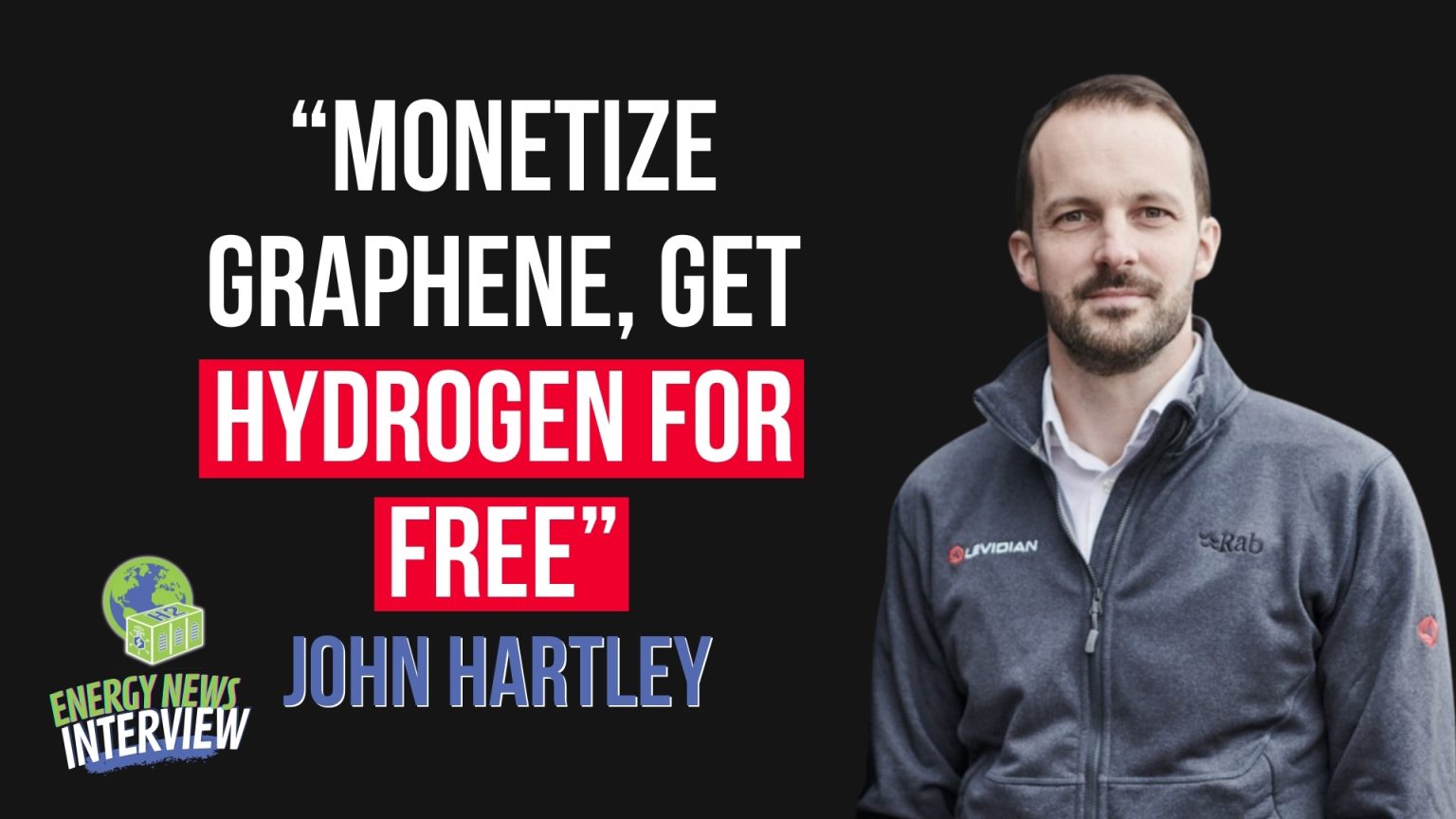A stark market reality: industrial sectors remain notoriously difficult to decarbonize, often reliant on intensive hydrocarbon combustion. Cambridge-based Levidian is advancing a methane pyrolysis technology, dubbed LOOP, that aims to address this by converting methane into low-carbon hydrogen and high-value graphene, potentially altering the economic equation for emissions reduction. The company reports a 20-fold increase in graphene yield per nozzle over the past two years, a critical factor for its business model, which hinges on graphene sales subsidizing hydrogen production.
WATCH THE FULL INTERVIEW
Levidian’s core proposition lies in its patented nozzle system, which utilizes microwave-generated plasma to crack methane (CH4) molecules. “We run that gas through a special nozzle system… and we apply electrically microwave energy to the gas flow,” explains CEO John Hartley. This process, distinct from traditional high-pressure, high-temperature methane reforming, splits methane into hydrogen gas (H2) and solid carbon in the form of graphene. The company states its latest lab developments have brought energy consumption for hydrogen production below the 50 kWh per kilogram benchmark, a figure often cited as a target for efficient electrolysis.
The crucial differentiator, Hartley emphasizes, is the co-production of graphene. “When you look at the economics of this, really the LOOP works as a standalone graphene producer, and the hydrogen and carbon capture can be upside,” he notes. This economic model relies on the high market value of graphene, a nanomaterial with applications in enhancing materials like concrete, batteries, and polymers. Levidian claims to have sold graphene to over 50 customers in the last 12 months, suggesting market traction for this “super additive.” A single next-generation LOOP module is projected to produce approximately 15 tons of graphene and slightly more hydrogen annually.
The company is not positioning itself for grid-scale hydrogen, but rather for on-site industrial applications. Current deployments range from a “Loop 10” system (referencing kilowatt-hours consumption) to a “Loop 100” unit at United Utilities, demonstrating a tenfold increase in deployed system capacity. These containerized units can be installed relatively quickly, a claimed advantage over larger infrastructure projects. Ideal customers, according to Hartley, are those who can utilize all three outputs: captured carbon (by preventing methane combustion), on-site hydrogen, and graphene. The water treatment sector is a prime example where biogas from anaerobic digestion can be processed, with the produced hydrogen used for fuel cells and the graphene incorporated into concrete for infrastructure projects. Similarly, the oil and gas sector could utilize LOOP to mitigate fugitive methane emissions, using the hydrogen for operational power and the graphene for applications like corrosion-resistant pipeline coatings.
However, scaling presents significant hurdles. Hartley identifies the primary commercial challenge as “matching the LOOP network capacity with graphene offtake demand.” The sales and deployment cycle for LOOP systems (12-18 months for a sale, plus installation) differs vastly from the often lengthy R&D and certification timelines for new material adoption like graphene, which can take years. On the technical front, while efficiency is improving, the current scale of hydrogen production per unit may not meet the demands of very large industrial users. Levidian frames this as an incremental journey, allowing customers to blend hydrogen with natural gas and gradually increase the hydrogen share as both LOOP technology and their infrastructure evolve.
Regulatory complexities, particularly concerning graphene as a nanomaterial, also present a challenge, with handling requirements varying by jurisdiction, notably in the US market. Despite this, Levidian views its tripartite output—carbon capture, hydrogen, and high-value graphene—as its core competitive advantage, distinguishing it from entities focused on only one or two of these elements.
Future R&D is targeting the processing of other gases, including carbon dioxide (CO2). Lab-scale tests have shown that LOOP can dissociate CO2 into carbon monoxide (CO) and oxygen, with CO being a precursor for Sustainable Aviation Fuels (SAF). “We’ve done it in our Cambridge lab but we’ve not done it at scale yet,” Hartley concedes. Further work involves enhancing graphene’s usability by developing dispersions and masterbatches, and exploring new applications, such as in aluminum production to improve anode lifespan and reduce energy consumption. The vision extends to a future where Levidian’s technology is integrated into waste gas infrastructure globally, with graphene ubiquitously enhancing everyday materials, from construction to consumer products, without necessitating drastic lifestyle changes for end-users. The ability to scale graphene production commensurate with such widespread adoption, leveraging abundant carbon from waste methane sources, remains a foundational assumption of this long-term outlook.





